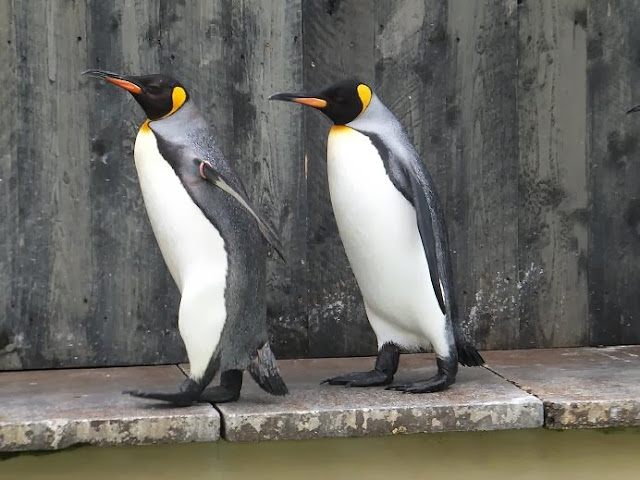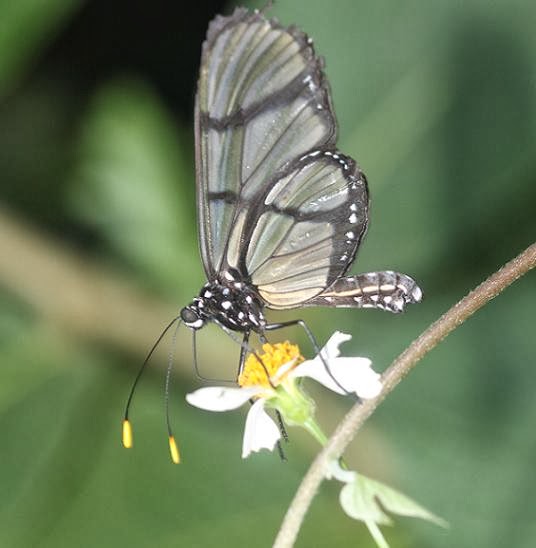The journey started at Inverness Bus Station.
Once boarded, we had a 3 hour bus journey to John O'Groats ahead of us. The young girl with the microphone on the coach gave us lots of information on the way.
She told us about the Highland clearances, the 1863 Helmsdale gold rush, why all whisky distilleries are soot black (which they call angels breath), she pointed out Dunrobin castle which is the largest house in Scotland with it's 189 rooms, the statue of the much hated Duke of Sutherland who realised he could make more money raising sheep then collecting rent, hence the clearances-that Caithness is the least populated county in the UK, where sheep outnumber people 10 to 1 & showed us where the last witch was burnt in the British Isles ( Janet Horne in 1727, Dornoch ).
She told us lots more, but that's all I remember...it's a beautiful route to John O groats, mostly coastal, and often round lots of winding cliff side turns.
John O Groats was a bit like Lands End. Lots of people jostling to pose for endless photographs in front of signs pointing in every direction imaginable with the estimated mileage printed besides it (including New Zealand straight down, through the Earth 12,875 miles apparently). There was an air of excitement which you could hear in the voices of some of the people you passed by. Maybe, a few had finally completed the Lands End-John O groats journey and it had taken weeks so they had something to celebrate.
We didn't have to wait more then 15 minutes for our ferry the Pentland Venture to turn up. There were dozens of scratches, marks and dents on the side of the boat, presumably from bashing the ferry against the jetty as it came in to dock, which was a bit of a worry. The ferry was so overloaded, it was shocking just how many people they managed to fit on board. Even the owner of the boat looked a bit stressed looking at this huge waiting queue when the boat was already mostly full. In fact, it was so full, someone even came along trying to persuade anyone who wanted to, to go on another day instead. I swear our ferry sunk two inches in the water once everybody was on board!
Anyway, after the 40 minute crossing, and disembarking we boarded one of three coaches that all had different itineries. Before we went anywhere we were taken to Kirkwall for lunch. I walked to tescos to get some food, then walked down to the harbour before heading back to the High Street which looked like any typical small town High Street with its usual selection of banks, shops, pubs, a post office & even its own cathedral.
The coach driver (who came from Glasgow initially but spent much of his life living in the South of England) was a fantastic guide, and very funny. He told us that out of the 3 drivers he was the good looking one, so whenever we had to re-board our coach after being dropped off somewhere, if we were unsure at all which coach to get on, we had to remember that, so if we came across a driver who was particularly ugly (his words not mine) by no accounts should we get on because it was the wrong bus! Personally, I thought all the drivers looked exactly the same, as all drivers seem to with their sedentry lifestyle, slightly balding, all with beer guts... :)
He told us about Scapa Flow, the large body of water in the middle of the Island, which during both wars, the Royal Navy kept most of it's fleet there because of the protection offered by the Islands.
Tragically, there is a British warship called the Royal Oak that was sunk by a German U-boat, with the loss of over 800 lives in the 2nd World war. It was so sad to think of that ship at the bottom of Scapa Flow which is a designated gravesite, because all 800 bodies (mostly 18-19 year olds) are still on board.
Almost the entire German fleet were also scuttled at Scapa Flow during the first World war, so there is so much wreckage lying on the sea bed, divers from all over the World visit the Orkneys to explore, but the grisly notion of all those dead sailors would put me off going anywhere near any of the wreckage. At low tide, we could see several ships jutting out of the water.
The u-boat that sunk the Royal Oak skillfully navigated through the Islands defences. Churchill immediately ordered that the gaps into Scapa Flow be sealed, which was carried out by Italian prisoners of war. The gaps that were sealed up were called the Churchill Barriers, and they doubled up as roads, so suddenly most of the Islands were now connected following the war, which is how we were able to get from one island to the next so easily.
Skara Brae was an interesting site-supposedly 5,000 years old! The journey from the entrance building to the site feels like a quarter of a mile, and all along the route are paving slabs marked with historic events that took place the equivelant distance to the time in history when they took place. For instance, the first few steps outside of the entrance building contain slabs marked with the 'first man lands on the moon' 'the first man in space' 'the first telephone' etc. In fact, you're only half way to the site when you come across a slab with the sign 'the birth of Christ.' There was still 3,000 years to go back in time until you reached the time when this village was built! Some of the houses were so well preserved. One of the houses you could still see the original stone furniture inside!
We also visited the Ring of Brodger, the Standing Stones of Stenness and the Italian chappel built by the numerous Italian prisoners of war out of a Nissan hut, and miraculously painted, decorated and designed using the cheapest of materials they had access to. The statue at the front for instance, unbelievably was made out of chicken wire and concrete., but you'd never guess.
On the way back to John O'Groats, not only did we see a few puffins, we also saw a pod of dolphins.
Great day.

















































